
LOADING ...
In response to evolving domestic opinion, eMedals Inc has made the conscious decision to remove the presentation of German Third Reich historical artifacts from our online catalogue. For three decades, eMedals Inc has made an effort to preserve history in all its forms. As historians and researchers, we have managed sensitive articles and materials with the greatest of care and respect for their past and present social context. We acknowledge the growing sentiments put forth by the Canadian public and have taken proactive actions to address this opinion.
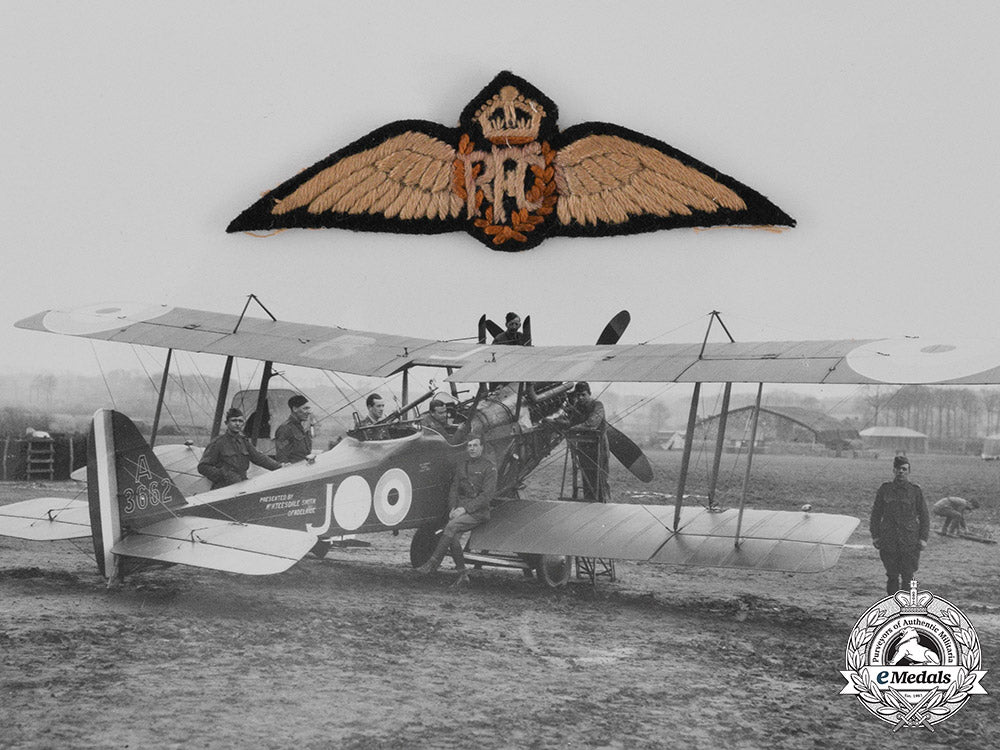
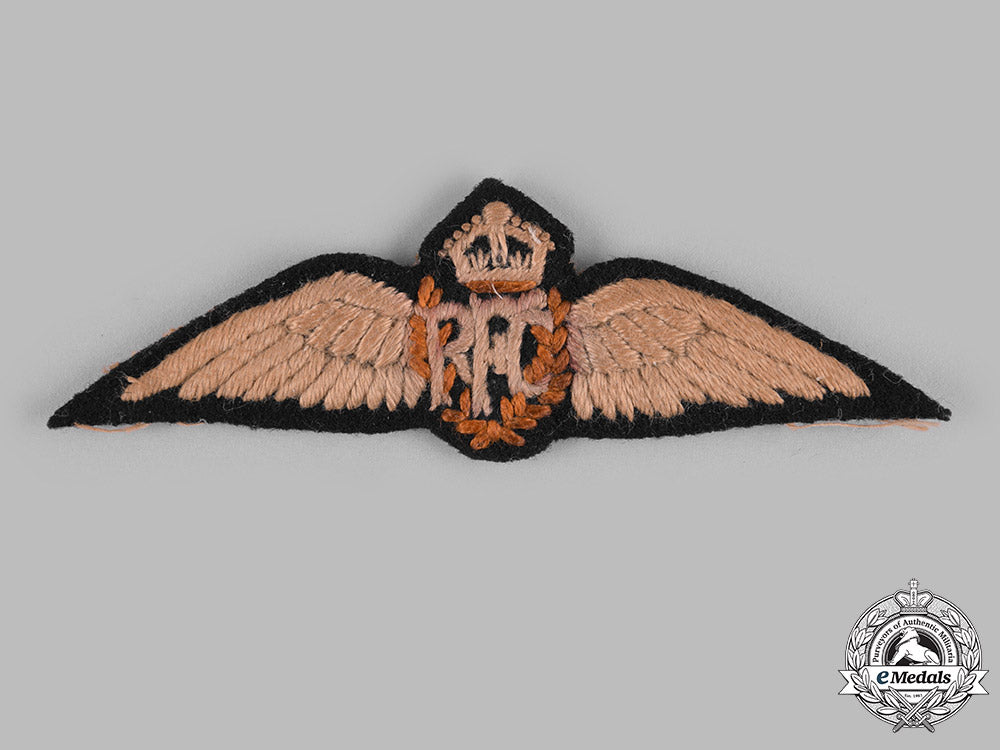
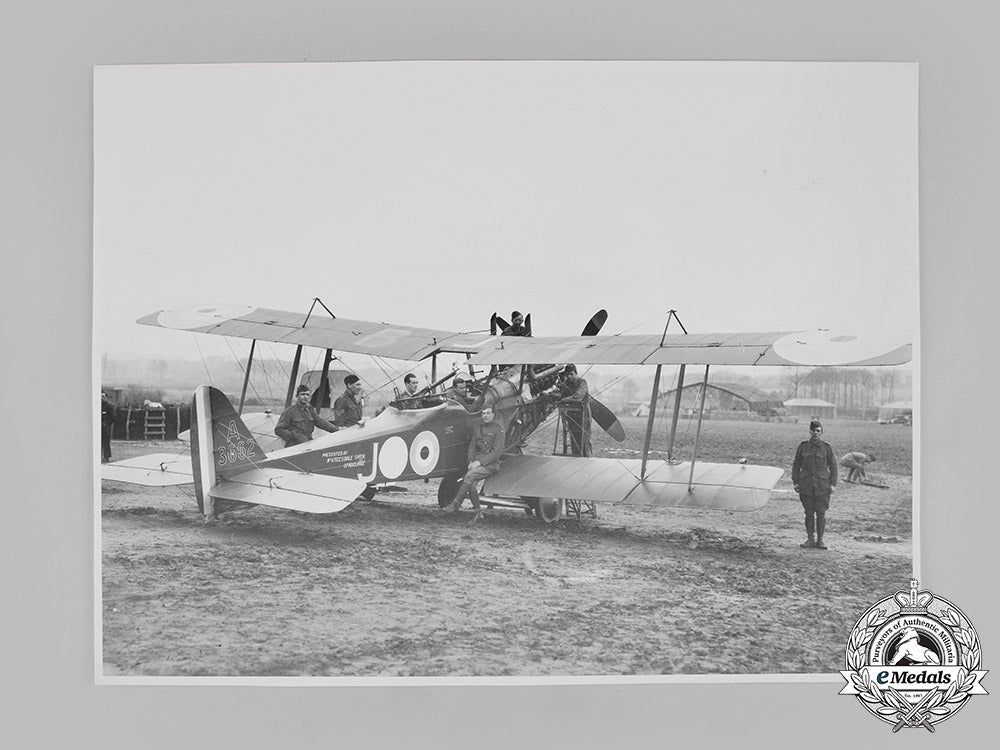
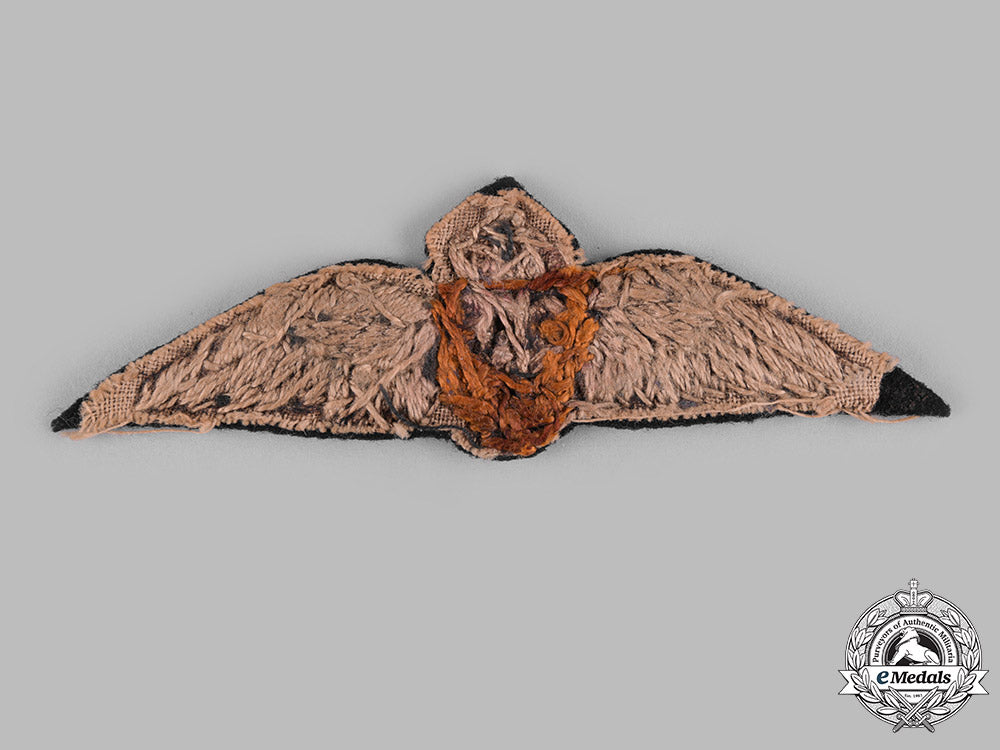
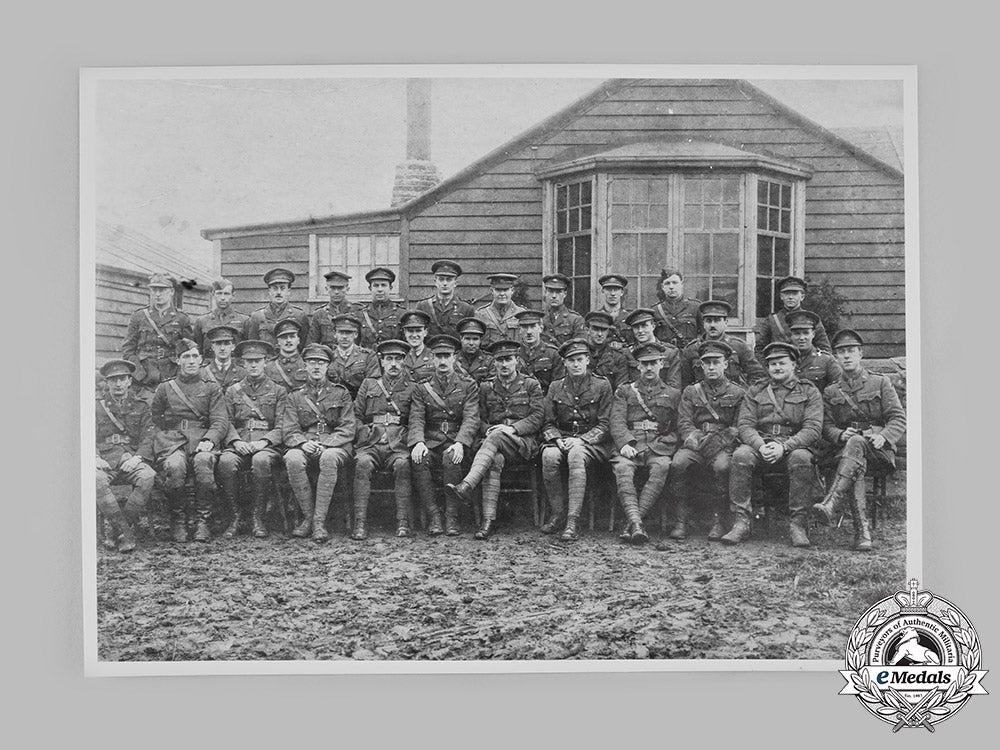
Australia. A Rfc Pilot Wing Attributed To Dfc Recipient Lieutenant Simpson, 3Rd Squadron, Afc
Australia. A Rfc Pilot Wing Attributed To Dfc Recipient Lieutenant Simpson, 3Rd Squadron, Afc
SKU: ITEM: M0014-53
Current Bid:
Your Max Bid:
Bid History:
Time Remaining:
Couldn't load pickup availability
Shipping Details
Shipping Details
eMedals offers rapid domestic and international shipping. Orders received prior to 12:00pm (EST) will be shipped on the same business day.* Orders placed on Canadian Federal holidays will be dispatched the subsequent business day. Courier tracking numbers are provided for all shipments. All items purchased from eMedals can be returned for a full monetary refund or merchandise credit, providing the criteria presented in our Terms & Conditions are met. *Please note that the addition of a COA may impact dispatch time.
Shipping Details
eMedals offers rapid domestic and international shipping. Orders received prior to 12:00pm (EST) will be shipped on the same business day.* Orders placed on Canadian Federal holidays will be dispatched the subsequent business day. Courier tracking numbers are provided for all shipments. All items purchased from eMedals can be returned for a full monetary refund or merchandise credit, providing the criteria presented in our Terms & Conditions are met. *Please note that the addition of a COA may impact dispatch time.
Description
Description
Royal Flying Corps Pilot's Wing (in light brown and white embroidery, on a black wool base, hessian backer, measuring 110 mm (w) x 34 mm (h)); Australian Flying Corps Group Photograph (black and white, gloss finish, illustrating thirty-three officers of the 3rd Squadron, Australian Flying Corps, taken in November 1917 at Bailleul, France, with Simpson in the back row, fourth from the right, reverse stamped "Photo No. E2765 / Supplied by Australian War Memorial / Canberra, A.C.T.", measuring 212 mm (w) x 157 mm (h)); Australian Flying Corps Airplane Photograph (black and white, gloss finish, illustrating eight airmen surrounding an airplane at an airfield, numbered "A3662" on the tail and marked "PRESENTED BY Mr H. TEESDALE SMITH OF ADELAIDE" near the rear of the aircraft, reverse stamped "Photo No. E1359 / Supplied by Australian War Memorial / Canberra, A.C.T.", measuring 210 mm (w) x 158 mm (h)); Enlargement Headshot of Simpson from the Group Photograph (in black and white, gloss finish, marked "LT. T.L. SIMPSON DFC" on the reverse, measuring 50 mm (w) x 63 mm (h)); accompanied by a letter with the masthead of Warren Carroll, author of "Eagles Recalled", along with photographic records of the Australian Flying Corps and assorted research papers.
Footnote: Lieutenant (Temporary Captain) Thomas Leigh Simpson, 3rd Squadron, Australian Flying Corps was born in Hamilton, Victoria, Australia in 1895. Before joining the Australian Flying Corps, Simpson served in the Middle East with the 3rd Australian Light Horse Brigade and more specifically in the 3rd Australian Light Horse Field Ambulance. He is acknowledged as having been at the Battle of Romani in August 1916, which was the last ground attack of the Central Powers on the Suez Canal at the beginning of the Sinai and Palestine Campaign. Later, he was in the Australian Army Medical Corps prior to duty with 3rd Squadron, Australian Flying Corps in France. Lieutenant Simpson would receive a Distinguished Flying Cross for actions taken on Sunday, April 21, 1918. At the base that morning in Baileul, France, it was dark, wet, cold at 5 a.m., the ground crew, pilots and observers of 3rd Squadron, Australian Flying Corps were making ready to fly the "Dawn Patrol". Two R.E.8 aircraft, manned by Lieutenants T.L. Simpson and E.C. Banks in B.6576 and and Lieutenants S.G. Garrett and A.V. Barrow in A.3661 were preparing for a photographic reconnaissance mission. R.E.8's were slow, two-seater reconnaissance aircraft, but had the advantage of rear facing Lewis guns manned by the observers. At about 10:30 a.m., Lieutenants Simpson and Banks in one aircraft and Garrett and Barrow in a second aircraft, took off for the next patrol. The two aircraft were on a reconnaissance of the German lines near Hamel at 7,000 feet, when they were attacked by an element of four Fokker Dr I triplanes from a large "Richthofen Circus" formation led by the Baron himself. Lieutenants Simpson and Banks fought their way to the safety of nearby cloud cover, while the enemy triplanes concentrated on the other R.E.8. Through a combination of Lieutenant Garrett's skilful flying and Lieutenant Barrow's accurate shooting, one triplane, believed to be a Jasta 5 machine, was shot down. The other three triplanes then withdrew to the main "Circus" formation to re-group for an approaching attack by several Sopwith Camels from No. 209 Squadron, Royal Air Force, lead by a Canadian, Captain Roy Brown. It was during the subsequent fight that the "Red Baron" was fatally shot down.
Meanwhile, Lieutenants Simpson and Garrett had completed their photographic commitment and were on their way home at 8,000 feet. However, Simpson's R.E.8 aircraft, B.6576, had a further clash with a large formation of Albatros scouts out to avenge the death of their leader, Manfred von Richthofen. Lieutenant Simpson took the only way out. He dived the R.E.8 to the ground while Banks kept up a steady stream of machine gun fire, to ward off the attackers. Eventually, they eluded their pursuers and flew home at 2,000 feet. Lieutenant (Temporary Captain) Thomas Leigh Simpson, 3rd Squadron, Australian Flying Corps was awarded the Distinguished Flying Cross, his citation appearing in the Second Supplement to the London Gazette 30827 of Friday, August 2, 1918, on Saturday, August 3, 1918, page 9204: "An officer of exceptional ability, courage and determination. He has directed our artillery fire on forty occasions on hostile batteries, and has taken over 500 photographs of enemy positions. He was attacked by six triplanes on one occasion whilst engaged in photographing the enemy positions, and managed to hold his own until our scouts drove them off. Later, he was again attacked by a large enemy formation, but he skilfully outmanoeuvred them. Recently, whilst on patrol, he located eight enemy batteries, upon which he directed a concentration of our artillery fire. On this occasion he was wounded by anti-aircraft fire whilst flying low." He is also documented as having been a recipient of the DFC in the Commonwealth of Australia Gazette on Thursday, December 12, 1918, page 2349. Lieutenant Simpson, along with his cousin Lieutenant John Robertson Duigan would fly together in France as pilots in 3rd Squadron of the then fledgling Australian Flying Corps (later the Royal Australian Flying Corps). Between them, they would be the recipient of the Distinguished Flying Cross for bravery under fire (Simpson) and the Military Cross for gallantry in action (Duigan).
Description
Royal Flying Corps Pilot's Wing (in light brown and white embroidery, on a black wool base, hessian backer, measuring 110 mm (w) x 34 mm (h)); Australian Flying Corps Group Photograph (black and white, gloss finish, illustrating thirty-three officers of the 3rd Squadron, Australian Flying Corps, taken in November 1917 at Bailleul, France, with Simpson in the back row, fourth from the right, reverse stamped "Photo No. E2765 / Supplied by Australian War Memorial / Canberra, A.C.T.", measuring 212 mm (w) x 157 mm (h)); Australian Flying Corps Airplane Photograph (black and white, gloss finish, illustrating eight airmen surrounding an airplane at an airfield, numbered "A3662" on the tail and marked "PRESENTED BY Mr H. TEESDALE SMITH OF ADELAIDE" near the rear of the aircraft, reverse stamped "Photo No. E1359 / Supplied by Australian War Memorial / Canberra, A.C.T.", measuring 210 mm (w) x 158 mm (h)); Enlargement Headshot of Simpson from the Group Photograph (in black and white, gloss finish, marked "LT. T.L. SIMPSON DFC" on the reverse, measuring 50 mm (w) x 63 mm (h)); accompanied by a letter with the masthead of Warren Carroll, author of "Eagles Recalled", along with photographic records of the Australian Flying Corps and assorted research papers.
Footnote: Lieutenant (Temporary Captain) Thomas Leigh Simpson, 3rd Squadron, Australian Flying Corps was born in Hamilton, Victoria, Australia in 1895. Before joining the Australian Flying Corps, Simpson served in the Middle East with the 3rd Australian Light Horse Brigade and more specifically in the 3rd Australian Light Horse Field Ambulance. He is acknowledged as having been at the Battle of Romani in August 1916, which was the last ground attack of the Central Powers on the Suez Canal at the beginning of the Sinai and Palestine Campaign. Later, he was in the Australian Army Medical Corps prior to duty with 3rd Squadron, Australian Flying Corps in France. Lieutenant Simpson would receive a Distinguished Flying Cross for actions taken on Sunday, April 21, 1918. At the base that morning in Baileul, France, it was dark, wet, cold at 5 a.m., the ground crew, pilots and observers of 3rd Squadron, Australian Flying Corps were making ready to fly the "Dawn Patrol". Two R.E.8 aircraft, manned by Lieutenants T.L. Simpson and E.C. Banks in B.6576 and and Lieutenants S.G. Garrett and A.V. Barrow in A.3661 were preparing for a photographic reconnaissance mission. R.E.8's were slow, two-seater reconnaissance aircraft, but had the advantage of rear facing Lewis guns manned by the observers. At about 10:30 a.m., Lieutenants Simpson and Banks in one aircraft and Garrett and Barrow in a second aircraft, took off for the next patrol. The two aircraft were on a reconnaissance of the German lines near Hamel at 7,000 feet, when they were attacked by an element of four Fokker Dr I triplanes from a large "Richthofen Circus" formation led by the Baron himself. Lieutenants Simpson and Banks fought their way to the safety of nearby cloud cover, while the enemy triplanes concentrated on the other R.E.8. Through a combination of Lieutenant Garrett's skilful flying and Lieutenant Barrow's accurate shooting, one triplane, believed to be a Jasta 5 machine, was shot down. The other three triplanes then withdrew to the main "Circus" formation to re-group for an approaching attack by several Sopwith Camels from No. 209 Squadron, Royal Air Force, lead by a Canadian, Captain Roy Brown. It was during the subsequent fight that the "Red Baron" was fatally shot down.
Meanwhile, Lieutenants Simpson and Garrett had completed their photographic commitment and were on their way home at 8,000 feet. However, Simpson's R.E.8 aircraft, B.6576, had a further clash with a large formation of Albatros scouts out to avenge the death of their leader, Manfred von Richthofen. Lieutenant Simpson took the only way out. He dived the R.E.8 to the ground while Banks kept up a steady stream of machine gun fire, to ward off the attackers. Eventually, they eluded their pursuers and flew home at 2,000 feet. Lieutenant (Temporary Captain) Thomas Leigh Simpson, 3rd Squadron, Australian Flying Corps was awarded the Distinguished Flying Cross, his citation appearing in the Second Supplement to the London Gazette 30827 of Friday, August 2, 1918, on Saturday, August 3, 1918, page 9204: "An officer of exceptional ability, courage and determination. He has directed our artillery fire on forty occasions on hostile batteries, and has taken over 500 photographs of enemy positions. He was attacked by six triplanes on one occasion whilst engaged in photographing the enemy positions, and managed to hold his own until our scouts drove them off. Later, he was again attacked by a large enemy formation, but he skilfully outmanoeuvred them. Recently, whilst on patrol, he located eight enemy batteries, upon which he directed a concentration of our artillery fire. On this occasion he was wounded by anti-aircraft fire whilst flying low." He is also documented as having been a recipient of the DFC in the Commonwealth of Australia Gazette on Thursday, December 12, 1918, page 2349. Lieutenant Simpson, along with his cousin Lieutenant John Robertson Duigan would fly together in France as pilots in 3rd Squadron of the then fledgling Australian Flying Corps (later the Royal Australian Flying Corps). Between them, they would be the recipient of the Distinguished Flying Cross for bravery under fire (Simpson) and the Military Cross for gallantry in action (Duigan).





You May Also Like
Japan, Empire. A T90 Civil Defense Helmet, c.1943
W8287
Canada, CEF. A Large Oval Photo
C7175
International. A Lot of Five Medals & Badges
M0685-9
Italy, Kingdom. An Order of St. Maurice and St. Lazarus, c.1900
EU23629
Spain, Kingdom. A Royal and Military Order of St. Hermenegildo, Grand Cross Star, c.1880
EU23630
-
Japan, Empire. A T90 Civil Defense Helmet, c.1943
W8287
Add to CartRegular price $275 USDRegular price $0 USD Sale price $275 USDUnit price / per -
Canada, CEF. A Large Oval Photo
C7175
Add to CartRegular price $120 USDRegular price $0 USD Sale price $120 USDUnit price / per -
International. A Lot of Five Medals & Badges
M0685-9
Add to CartRegular price $200 USDRegular price $0 USD Sale price $200 USDUnit price / per -
Italy, Kingdom. An Order of St. Maurice and St. Lazarus, c.1900
EU23629
Add to CartRegular price $375 USDRegular price $0 USD Sale price $375 USDUnit price / per -
Spain, Kingdom. A Royal and Military Order of St. Hermenegildo, Grand Cross Star, c.1880
EU23630
Add to CartRegular price $685 USDRegular price $0 USD Sale price $685 USDUnit price / per
Do you have a similar item you are interested in selling?
Please complete the form and our client care representatives will contact you.
Sell Item














